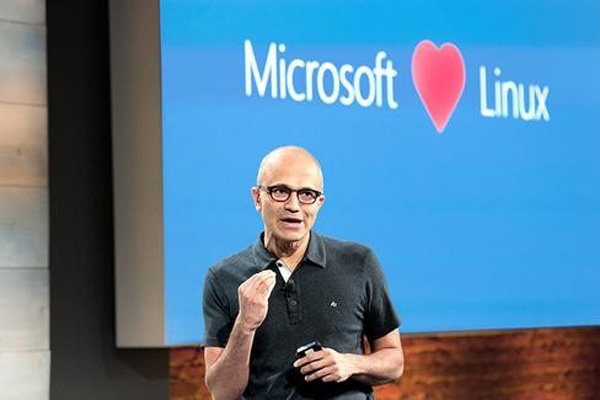
Satya Nadella
Microsoft releases PowerShell for Linux
DUBAI, August 29, 2016
Microsoft today announced that its versatile scripting and automation platform PowerShell is now open-source and available on Linux.
PowerShell uses the .NET Framework to provide a shell and scripting language that allows task automation through command-line calls. Now Linux administrators can take advantage of PowerShell to schedule, monitor and maintain processes across complex network topologies.
“Today’s IT environments operate in a multi-platform, multi-cloud, multi-OS, multi-device world and Microsoft recognises that integration of these systems is a huge challenge for technology professionals,” said Necip Ozyucel, Cloud and Enterprise Business Solutions lead, Microsoft Gulf. “As Satya Nadella has said, ‘Microsoft loves Linux’; now, we have further delivered on that philosophy, by offering PowerShell to our Linux customers.”
PowerShell includes Desired State Configuration (DSC), a tool that allows network managers to define and configure the optimal state of a system. DSC allows organisations to enact complex deployments across multi-platform environments, while ensuring those systems can be collaboratively managed and corrected for configuration drift.
The PowerShell Integrated Scripting Environment (ISE) provides admin teams with similar rich development tools to those enjoyed by software teams in Microsoft Visual Studio. Designed to support novices and experts alike, ISE features include a built-in editor for writing, testing, and debugging scripts; full IntelliSense functionality, including tab completion, syntax highlighting and context-sensitive help; keyboard shortcuts; support for right-to-left languages; and extensible add-ons.
Microsoft has long been working towards the delivery of management tools that will care for any platform, from anywhere, on any device, using Linux or Windows operating systems, and this open-platform policy has met with strong market approval. Open-source customers have flocked to Microsoft’s Azure cloud platform, and almost a third of Azure virtual machines run Linux. Meanwhile, in Azure Marketplace, where Microsoft hosts cloud services on behalf of third-party providers, nearly 60 per cent of infrastructure-as-a-service (IaaS) offerings are based on open-source software (OSS).
Azure is an enterprise proven hybrid cloud solution that gives the best of both worlds, enabling customers expand their IT options with data storage and backup, efficient recovery and economical services. This open and flexible platform makes it easier to build applications that work on-premises, supporting a wide array of industry-leading operating systems, tools and languages. The Web Apps feature in Azure App Service allows developers to rapidly build and deploy apps and APIs using .NET, Node.js, PHP, Python, and Java. Moreover, with its 100 per cent Apache Hadoop, Azure HDInsight processes and analyzes structured and unstructured data so that businesses can uncover new sets of data for driving their organization forward.
Microsoft believes PowerShell’s availability to Linux administrators will transform those customers’ cloud experiences when they combine PowerShell’s ability to micro-manage complex systems, with the visualisation capabilities of Azure’s Operations Management Suite (OMS).
OMS gives organisations clear views and granular control over applications and workloads spread across multiple clouds, and when combined with PowerShell, can impose tighter-than-ever management of such environments, while strong System Centre integration takes care of on-premises builds.
OMS automation takes PowerShell’s DSC and applies a highly available and scalable Azure-based management service. Through intuitive GUIs, administrators can manage PowerShell resources, including runbooks, DSC configurations and DSC node configurations, from a single point. OMS hybrid runbook workers allow teams to apply, monitor and update configurations anywhere, including on premises.
“PowerShell on Linux represents a huge boon to IT management and administration teams,” said Ozyucel. “When coupled with our strong cloud and operations management offerings – OMS in the cloud and System Center on premises – Microsoft customers can at last take effective control of their multi-platform, multi-cloud, multi-OS, multi-device world, and achieve more.” - TradeArabia News Service







